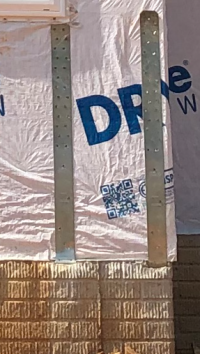I checked out Simpson's website and guides but couldn't find an answer. My gut says the STHD's should be under the water-resistive barrier so you don't create a bunch of extra nail holes in the WRB. However, I can't definitively call it out without being able to back it up. Am I overthinking it or does Simpson's site/guide not cover it because it's assumed it would be installed underneath to the studs or sheathing (at studs)?


